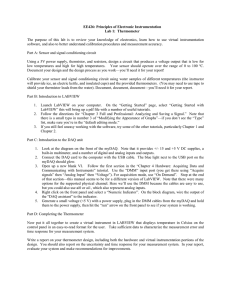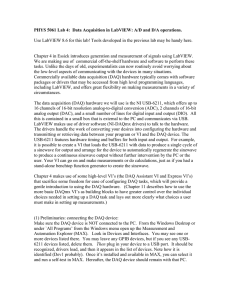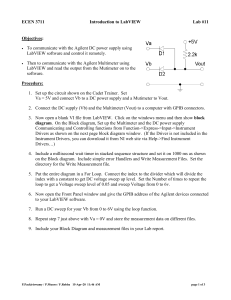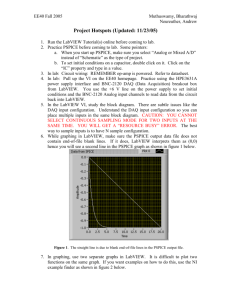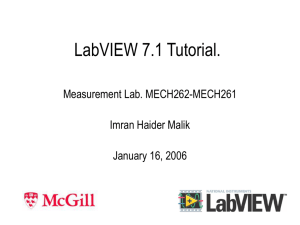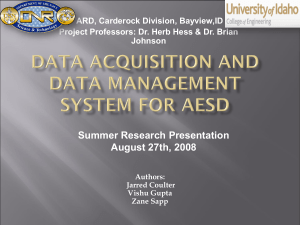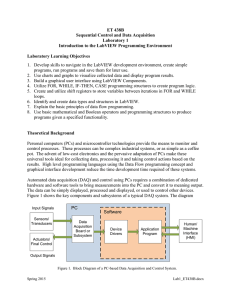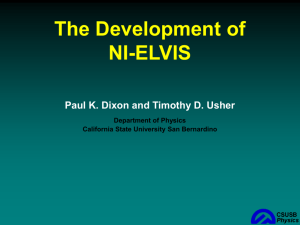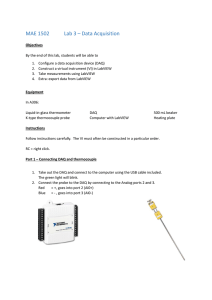here - ECE
advertisement
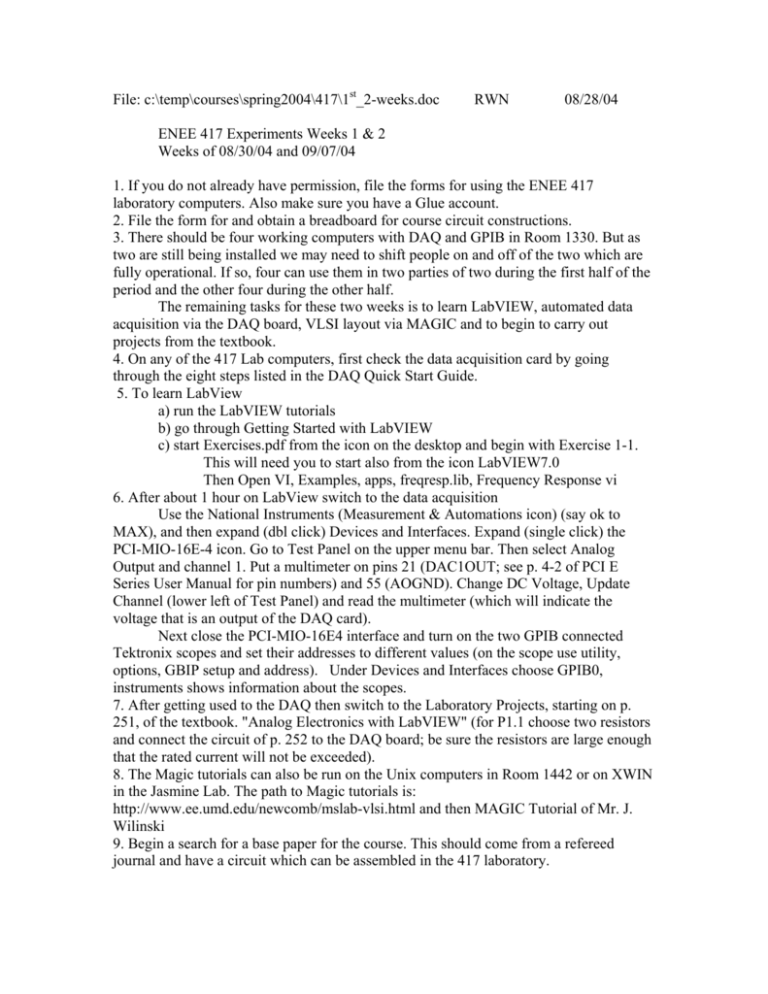
File: c:\temp\courses\spring2004\417\1st_2-weeks.doc RWN 08/28/04 ENEE 417 Experiments Weeks 1 & 2 Weeks of 08/30/04 and 09/07/04 1. If you do not already have permission, file the forms for using the ENEE 417 laboratory computers. Also make sure you have a Glue account. 2. File the form for and obtain a breadboard for course circuit constructions. 3. There should be four working computers with DAQ and GPIB in Room 1330. But as two are still being installed we may need to shift people on and off of the two which are fully operational. If so, four can use them in two parties of two during the first half of the period and the other four during the other half. The remaining tasks for these two weeks is to learn LabVIEW, automated data acquisition via the DAQ board, VLSI layout via MAGIC and to begin to carry out projects from the textbook. 4. On any of the 417 Lab computers, first check the data acquisition card by going through the eight steps listed in the DAQ Quick Start Guide. 5. To learn LabView a) run the LabVIEW tutorials b) go through Getting Started with LabVIEW c) start Exercises.pdf from the icon on the desktop and begin with Exercise 1-1. This will need you to start also from the icon LabVIEW7.0 Then Open VI, Examples, apps, freqresp.lib, Frequency Response vi 6. After about 1 hour on LabView switch to the data acquisition Use the National Instruments (Measurement & Automations icon) (say ok to MAX), and then expand (dbl click) Devices and Interfaces. Expand (single click) the PCI-MIO-16E-4 icon. Go to Test Panel on the upper menu bar. Then select Analog Output and channel 1. Put a multimeter on pins 21 (DAC1OUT; see p. 4-2 of PCI E Series User Manual for pin numbers) and 55 (AOGND). Change DC Voltage, Update Channel (lower left of Test Panel) and read the multimeter (which will indicate the voltage that is an output of the DAQ card). Next close the PCI-MIO-16E4 interface and turn on the two GPIB connected Tektronix scopes and set their addresses to different values (on the scope use utility, options, GBIP setup and address). Under Devices and Interfaces choose GPIB0, instruments shows information about the scopes. 7. After getting used to the DAQ then switch to the Laboratory Projects, starting on p. 251, of the textbook. "Analog Electronics with LabVIEW" (for P1.1 choose two resistors and connect the circuit of p. 252 to the DAQ board; be sure the resistors are large enough that the rated current will not be exceeded). 8. The Magic tutorials can also be run on the Unix computers in Room 1442 or on XWIN in the Jasmine Lab. The path to Magic tutorials is: http://www.ee.umd.edu/newcomb/mslab-vlsi.html and then MAGIC Tutorial of Mr. J. Wilinski 9. Begin a search for a base paper for the course. This should come from a refereed journal and have a circuit which can be assembled in the 417 laboratory.

